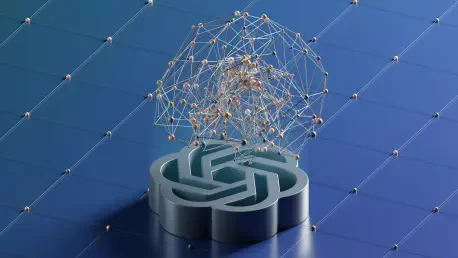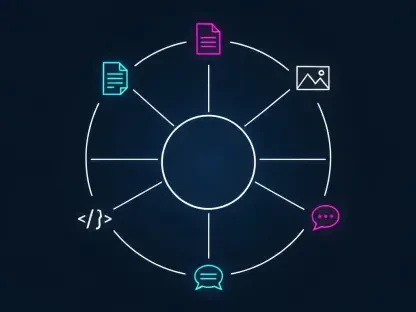In a rapidly advancing technological landscape, understanding the mechanisms behind AI tools such as ChatGPT is crucial. These systems, powered by sophisticated algorithms, aim to simulate human conversation adeptly. By delving into the complex workings of ChatGPT, developed by OpenAI, one gains insights into how such language models generate relevant, human-like text. As AI becomes integral to various facets of daily life, the challenge is to comprehend its internal processes, thereby mitigating over-reliance or misuse. The model’s operations are a blend of intricate programming and machine learning excellence, ensuring that interactions are not merely seen as futuristic magic but rather as the sophisticated outcomes of advanced technology.
The Nature of Large Language Models
Characterization and Functionality of Large Language Models
ChatGPT exemplifies a large language model, notable for its advanced textual capabilities. It specifically functions as a causal language model, meaning it creates text by predicting subsequent words based on preceding text in a manner similar to predictive systems found in smartphones but on a much grander scale. This process allows the model to simulate natural conversations that resemble human interaction. The principle underpinning this interaction is tokenization, an essential process where input text is divided into smaller units such as characters or entire words, enabling the AI to recognize patterns and predict the string of responses that follow.
A crucial element in making sense of these predictions is contextual analysis. Once a prompt is tokenized, the system embarks on understanding the context behind each word within the input. By building up a contextual layer of understanding, ChatGPT selects the most appropriate subsequent tokens, iteratively continuing this process until a comprehensive response forms. This approach is made possible by leveraging deep learning systems, particularly the Transformer architecture. Transformers employ a unique mechanism known as self-attention, allowing the AI to weigh the importance of each word in the context of a sentence, effectively grasping relationships and deciphering meanings.
Self-Attention and Predictive Analysis
In practical scenarios, self-attention proves invaluable as it enables ChatGPT to discriminate between different meanings of words like “bank,” adapting to its diverse interpretations based on surrounding text. This ability highlights the flexibility of the AI system in disambiguating complex linguistic nuances. The model’s proficiency is further refined through extensive pre-training on diverse datasets, covering a broad spectrum of information sources. This training phase endows ChatGPT with a deep understanding of grammar, the ability to recognize factual content, and fundamental reasoning skills necessary for coherent interaction.
Following the foundational pre-training, a fine-tuning phase refines the AI’s output through iterative feedback from human reviewers. This step is essential in tailoring the model’s responses for better alignment with real-world communication needs, fine-tuning it to handle nuances of human interaction adeptly. The system may provide different responses to similar queries at different times, attributed to probabilistic token prediction reliant on statistical analysis rather than sheer randomness. Recognizing ChatGPT’s limitations is imperative, considering its operation model involves a statistical understanding rather than human-like cognition.
Addressing the Challenges of AI Interaction
Limitations and Ethical Implications
Despite its remarkable capabilities, ChatGPT’s reliance on probabilistic models introduces certain challenges. Foremost among these is its propensity for “hallucination,” where the AI might produce responses that are inaccurate or nonsensical. Such outcomes are often exacerbated by inherent biases within the training datasets, which inadvertently shape its response patterns. These biases underscore the necessity of cautious usage and awareness of the AI’s imperfections to ensure outputs are both effective and ethically sound.
Additionally, the variability in responses highlights a critical aspect of AI systems like ChatGPT—their predictive nature often leads to different answers for the same questions under varied circumstances. This inconsistency, while rooted in the model’s design, necessitates a nuanced approach to utilizing AI interactions. Thus, understanding these limitations helps users engage more critically with AI, maximizing its utility while minimizing potential pitfalls associated with its outputs.
Navigating AI as a Tool, Not a Standalone Solution
Positioned as a groundbreaking technological advancement, ChatGPT is pivotal in enhancing productivity and fostering creative ideation. However, it is equally vital to recognize that the AI functions as a tool rather than an omniscient entity. Acknowledging its operational foundation and boundaries is paramount for judicious application. By advocating for informed interactions, users can appreciate the AI’s complex nature while understanding the breadth of its applications across diverse contexts.
This informed perspective is pivotal as AI technologies evolve, urging users to remain vigilant about both the potentials and limitations of AI systems like ChatGPT. A technical understanding of these systems enables users to leverage them more effectively, making careful considerations about their applicability and optimizing their benefits while safeguarding against risks inherent in automated outputs. This awareness ultimately empowers users to embrace AI advancements wisely.
Future Considerations in AI Development
Anticipating Advances and Enhancements
As AI technologies continue to evolve, ongoing advancements in models like ChatGPT allow for more nuanced and enriched interactions. Future iterations are expected to delve deeper into understanding context, improving both accuracy and relevance in responses. Such enhancements aim to bridge the gap between machine interpretation and human understanding, striving to create systems that answer queries and anticipate the underlying intent behind inquiries. Innovators focus on overcoming current limitations, with the goal being more robust systems that understand complexities in language and context that are akin to human cognition.
Enhancing Responsible AI Use
In today’s fast-paced technological world, understanding the inner workings of AI tools like ChatGPT is vital. These systems, driven by advanced algorithms, aim to expertly mimic human conversations. Diving into the complexities of ChatGPT, crafted by OpenAI, offers valuable insights into how these language models produce text that is both pertinent and strikingly human-like. AI is seamlessly integrating into numerous aspects of daily life, presenting the challenge of understanding its processes to prevent over-dependence and improper use. ChatGPT operates through a sophisticated mix of programming and machine learning, which ensures that interactions aren’t viewed merely as futuristic wonders but as the refined results of cutting-edge technology. As AI tools become more embedded in our routines, it’s essential to educate ourselves on how these systems function. This knowledge not only helps prevent misuse but also enables us to harness the potential of AI responsibly, shaping a future where technology complements rather than controls human endeavors.









